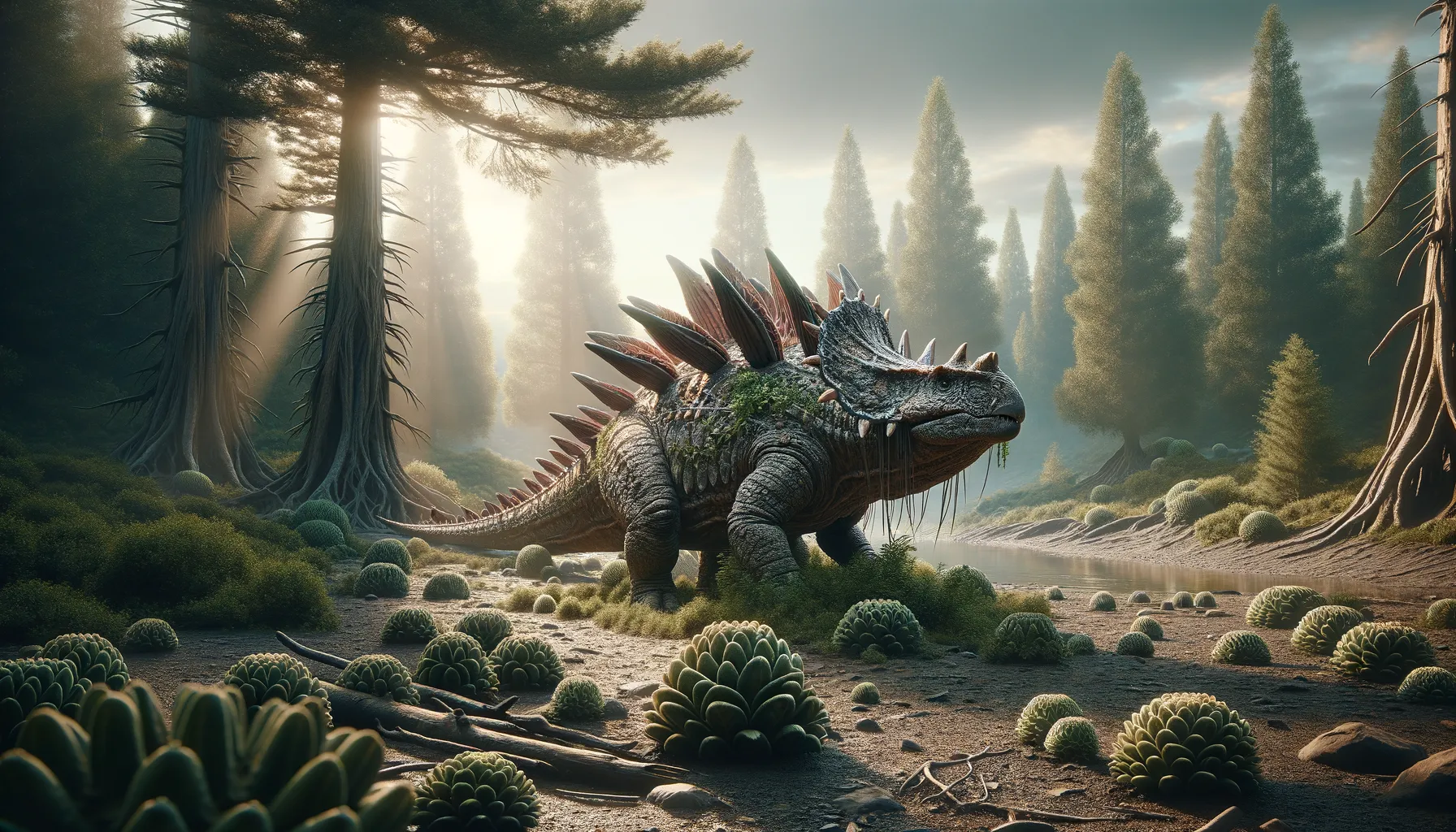
Taohelong
An armored guardian of the ancient world.
Period
Cretaceous
Length
Approximately 5 meters in length.
Height
Estimated height of about 2 meters.
Weight
Estimated to weigh around 1,000 kilograms.
Taohelong was an armored dinosaur from the early Cretaceous period. Known for its extensive bony plates and spikes, it served as a defensive powerhouse against predators. Fossils found in China reveal its remarkable body armor, which is a significant trait of its order. Researchers are particularly interested in its unique combination of spikes and plates, which distinguishes it from other ankylosaurs. Despite its intimidating appearance, Taohelong was a herbivore, primarily feeding on low-lying vegetation.
Diet
Taohelong was a herbivore, feeding on low-lying plants. Its diet likely included ferns, cycads, and other vegetation available during the Cretaceous period.
Hunting
Not a hunter, this dinosaur primarily focused on grazing and foraging. Its body was built for defense rather than chasing or capturing prey.
Environmental challenges
Taohelong faced challenges from large predators of the Cretaceous, necessitating its strong armor for protection. Climate changes during its time could have affected the availability of its preferred plant food sources. It may have also competed with other herbivores for resources, adapting its diet as needed to survive.
Speed
Taohelong likely moved slowly due to its heavy armor.
Lifespan
It may have lived around 20 to 30 years.
First discovery
The first fossils were found in the Gansu Province, China.
Fun Facts
- Taohelong is a genus of ankylosaurid dinosaur that lived during the Early Cretaceous period.
- The name 'Taohelong' means 'dragon from the Taohe River', referring to the river near where its fossils were discovered in China.
- Taohelong is known for its armored body, which was covered in bony plates and spikes for protection against predators.
- This dinosaur was a herbivore, which means it primarily ate plants that were available during its time.
- The fossils of Taohelong were first described in 2013, making it a relatively recent addition to the dinosaur family.
- Taohelong is part of the ankylosaur family, known for their distinctive club-like tails and heavy armor.
- While not as famous as some other dinosaurs, Taohelong adds valuable information to our understanding of ankylosaur evolution and diversity.
Growth and Development
Taohelong would have grown rapidly in its early years to escape vulnerability to predators. The development of its bony armor plates played a crucial role in its survival as it reached adulthood. Studying its bone structure provides insight into its growth patterns over the years.
Habitat
Taohelong lived in the lush floodplains and forests of early Cretaceous China. Its environment supported a variety of plant life, which was ideal for its herbivorous diet. The terrain also offered cover from predators, utilizing dense vegetation and its armored body to stay safe.
Interaction with other species
It likely had minimal interaction with predator species, relying on its armor for protection. Coexisting with other herbivores, Taohelong would have shared grazing grounds while avoiding direct competition. Its primary interaction was likely with species within its ecosystem, maintaining a balance within its habitat.
Natural lifespan
Taohelong may have lived up to 30 years in the wild.
Reproduction
Taohelong likely laid eggs, with nests hidden among dense vegetation. The hatchlings would have been vulnerable and needed the protection of their armored parents. Parental care may have been limited, with young Taohelong needing to quickly adapt to their environment.
Social behaviour
As a herbivorous and heavily armored dinosaur, Taohelong potentially lived in small groups. Group living could have provided some protection against predators, though mutual benefit of this behavior is still debated. These social structures might have contributed to its survival in the diverse yet dangerous Cretaceous ecosystems.
Fossil locations
Fossils have been found primarily in the Gansu Province of China. These findings provide key insights into the spread of ankylosaurids across Asia. The discovery sites have also helped paleontologists better understand the environment in which Taohelong thrived.
